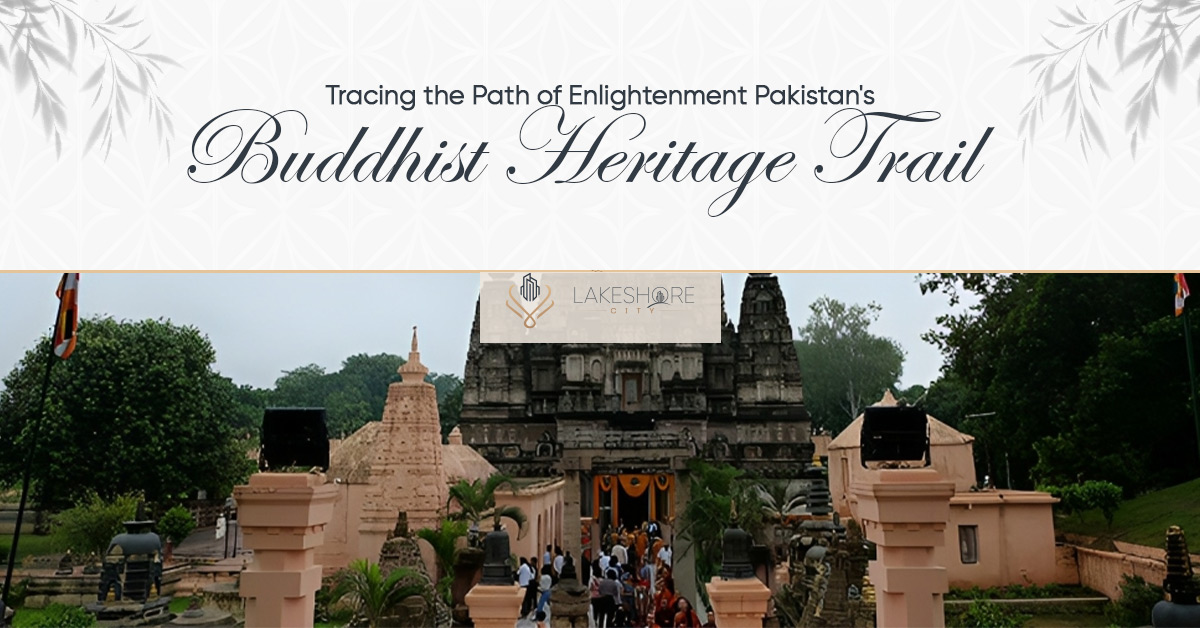BUDDHIST HERITAGE TRAIL
Historical ruins may be found throughout Pakistan, the melting pot of numerous civilizations and cultures from the Stone Age Sites to the British era. Nonetheless, the Indus Valley and Gandhara Civilizations are the most well-known. Gandharan art is on display in the galleries of nearly every major museum worldwide. To facilitate visitors who are eager to learn more about the Buddhist heritage, we have created the following four trails:
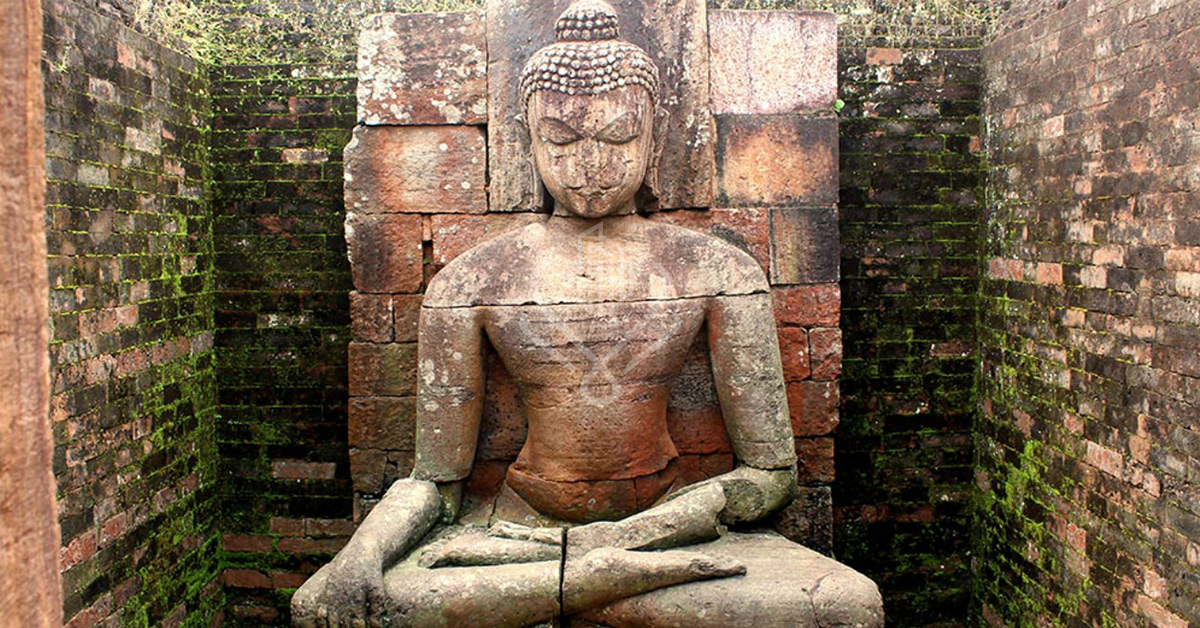
- a. Taxila and surroundings (Punjab)
- b. Peshawar and surrounding (Khyber Pakhtunkhwa)
- c. Swat and surroundings (Khyber Pakhtunkhwa)
- d. Karakorum Highway & Gilgit Baltistan
Essential Sites of Buddhist Heritage
Sphola Stupa
The stupa is a Buddhist monument from the second century located in Zarai village, close to Jamrud, Khyber Pakhtunkhwa. It serves as a reminder of the close relationship between Buddhism and the Kushan Empire, which is frequently shown in artifacts from the Gandhara. In actuality, this very stupa is home to Gandhara sculptures that were unearthed and are currently on display at the Peshawar Museum. Following them were Buddhist pilgrims and missionaries, drawn by Kanishka’s patronage to an intense religious revival.
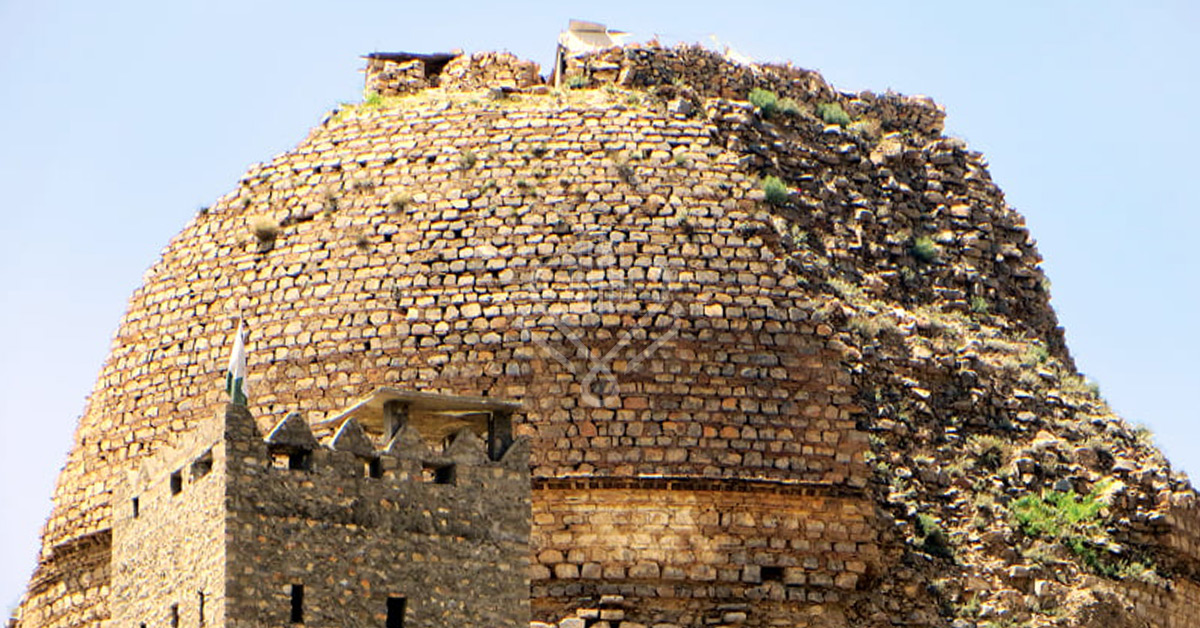
A number of Buddhist monasteries provided refuge, tucked away among the Khyber Pass’s folds. The Khyber Sphola stupa, in ruin, nevertheless declares the magnificence of its era.
Peshawar Museum
The provincial capital of Khyber Pakhtunkhwa, Peshawar, is home to the Peshawar Museum. The Museum is well-known for its assortment of ancient Gandhara Empire Buddhist artwork. Established in November 1907, the museum holds the Gandharan sculptures that were unearthed by British scholars from prominent Gandharan locations such as Jamal Garhi, Sahri Bahlol, Shah-Ji-Ki-Dheri Peshawar, and Takht-i-Bahi in the Mardan District. The world’s largest and most significant collection of Gandhara art is housed in the Peshawar Museum. It includes antique Buddhist stone sculptures and panels, architectural details, stucco, terracotta figurines, relic caskets, and toiletry items.
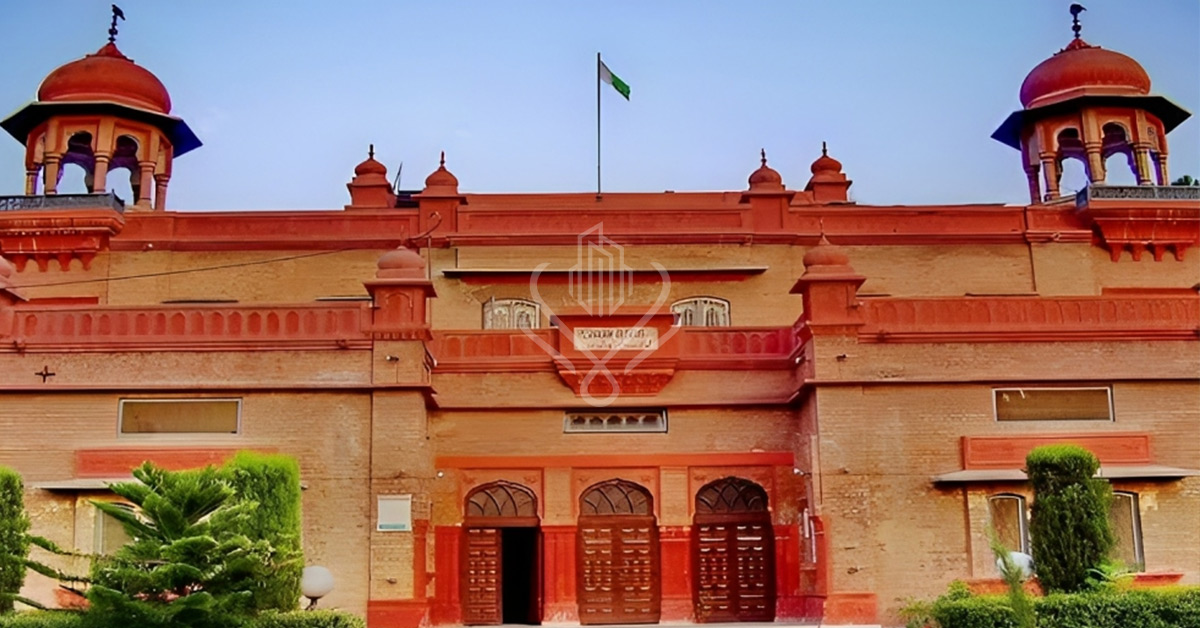
The chosen collection is on display in the museum’s main hall, eastern and western galleries on the ground floor, and the western side of the structure. Despite the fact that there are currently no Buddhist monuments in Peshawar, the Peshawar Museum is home to one of the largest collections of Buddhist artwork from Gandhara.
Museum Timings
- SAT – THU 9:00 AM – 05:00 PM Friday Closed.
- Entry Fees
- Pakistani Nationals: Rs. 10 Foreigners: Rs. 300
Gor Khatri Peshawar
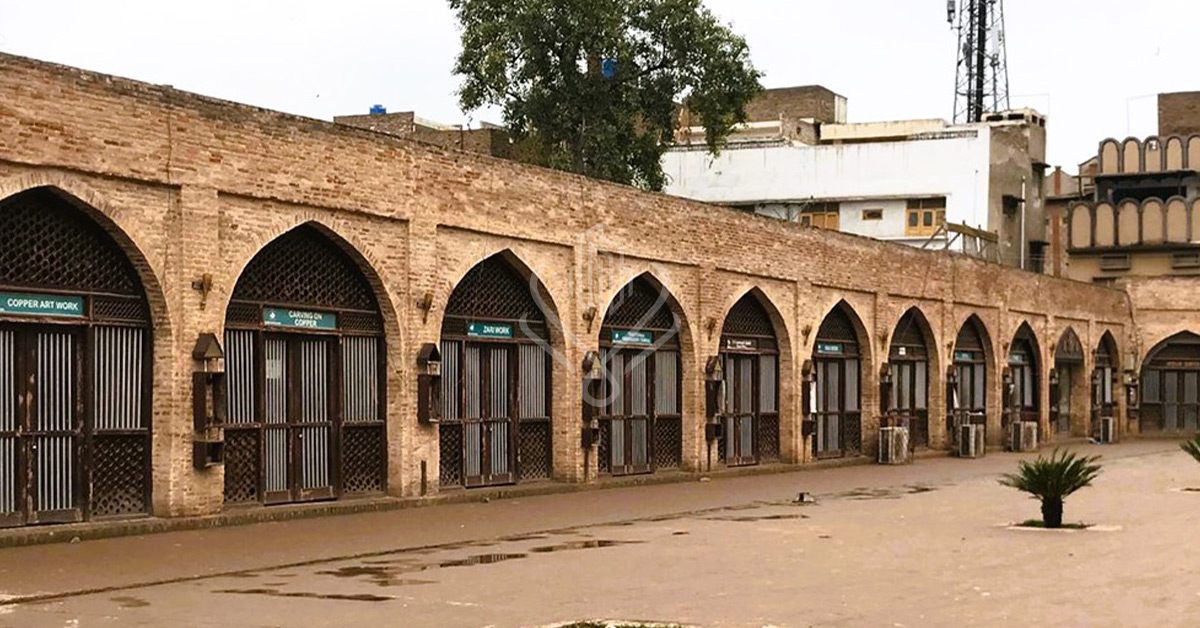
Situated amidst ancient ruins, Gor Khatri is a public park in Peshawar, housed within a caravanserai from the Mughal era. situated atop one of Peshawar City’s highest points. The complex consists of a fire brigade building that was constructed in 1917, a network of cells and buildings on the southern and western sides, and the Gorakhnath Temple in the center. In the center of the old Peshawar walled city is the archaeological site of Gor Khatri. Located inside the Gor Khatri complex is the city museum. In 1640 A.D.
Begum Jahanara, the adored daughter of Mughal Emperor Shahjahan, built the complex’s current structure. It was built as a caravanserai for the arriving merchants. The museum is made up of the Archaeological and Ethnological small galleries, and a third gallery has been added recently to house the British antiquities exhibition. The ancient logical gallery of this museum depicts the Peshawar Valley continuously in the form of excavated material that was found at the Gor Khatri site.
Shahbaz Garhi
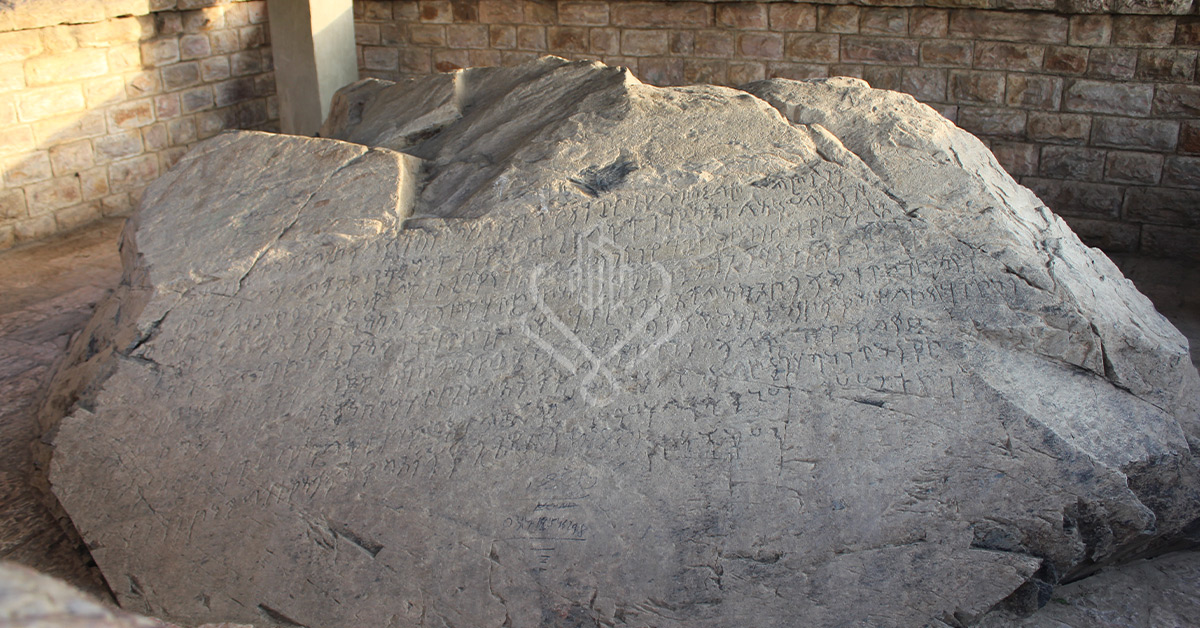
In Khyber-Pakhtunkhwa’s Mardan District sits the village and historical site known as Shahbaz Garhi, or Shahbazgarhi. The town was formerly a flourishing Buddhist metropolis with stupas and monasteries all around it. The town is home to historic rock inscriptions inscribed in the Kharosthi script and carved into two sizable boulders. These have great historical significance because they might be the earliest written records in South Asia. They were built in the third century BC (272-231 BC), under the rule of the well-known Mauryan emperor Ashoka, and they were written in the Kharoshthi script. On January 30, 2004, the rock edicts were added to the Cultural category of the UNESCO World Heritage Tentative List.
Takht-i-Bahi Buddhist Monastery
In District Mardan, Khyber-Pakhtunkhwa, there is an Indo-Parthian archaeological site known as “Throne of the Water Spring,” which is sometimes mispronounced as Takht-i-Bhai (“Brother throne”). This site was once home to an ancient Buddhist monastery. The location is regarded as one of Gandhara’s most impressive examples of Buddhist ruins and is “exceptionally well-preserved.”
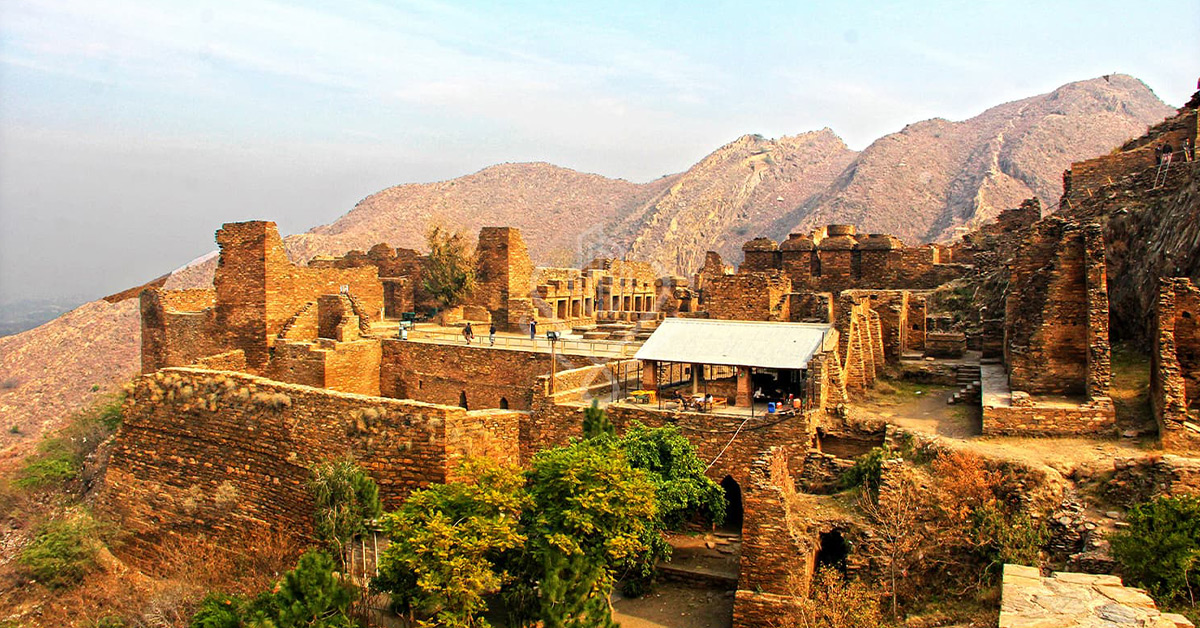
It is situated two kilometers from the village bazaar, at an elevation of about 500 feet atop a small hill. This Buddhist monastery dates back to the first century AD and was still in operation in the seventh. In 1980, Takht-i-Bahi was added to the UNESCO World Heritage List. The Takht-i-Bahi complex is divided into four main areas: A central courtyard is home to a collection of stupas known as the Stupa Court.
Jamal Garhi
Jamal Garhi is a small town in the province of Khyber Pakhtunkhwa, 13 kilometers from the Mardan district along the Katlang-Mardan road. From the first to the fifth century, Jamal Garhi was home to a Buddhist monastery. There’s the stunning main stupa and monastery encircled by densely clustered chapels. What’s left of Jamal Sir Alexander Cunningham, a British explorer and archaeologist, made the initial discovery of Garhi in 1848.
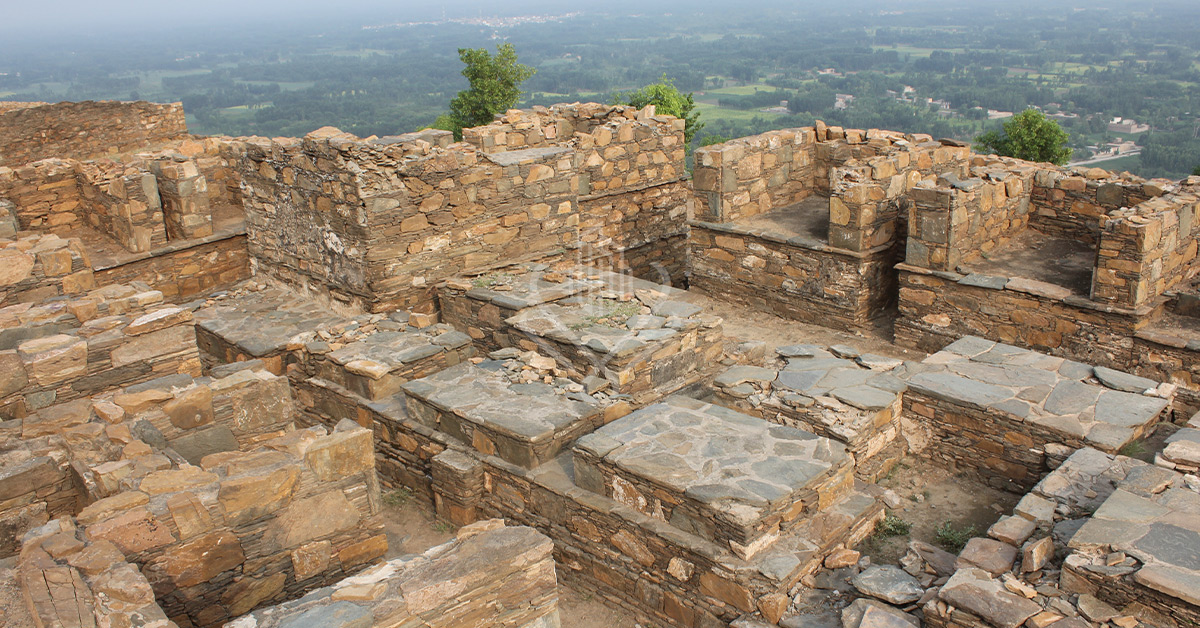
Lieutenant Cromten excavated the site in 1871 and found numerous Buddhist sculptures which are currently housed in the collections of Calcutta’s Indian Museum and the British Museum. The inscription from a Kharoshthi monastery was also found and is currently housed in the Peshawar Museum.
Ghalegay Rock Carvings
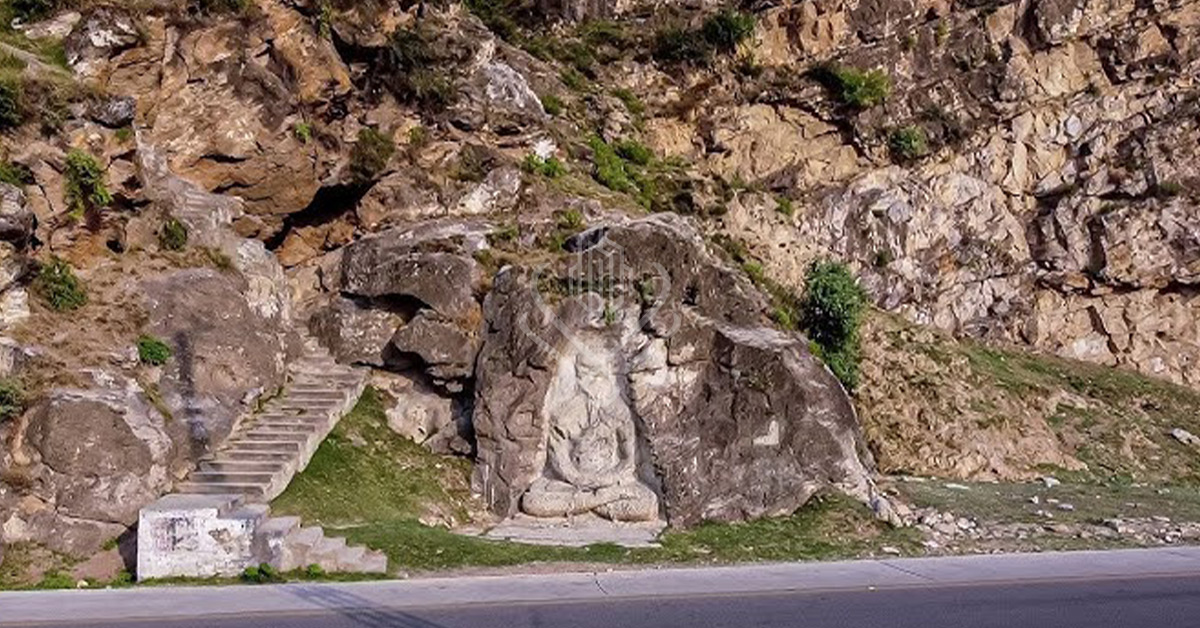
There is a Buddha statue carved into a rock on the right side of the main road in the Swat district, on the route to Saidu Sharif. Beside this statue, in a cave, are some more ruins.
Swat Museum
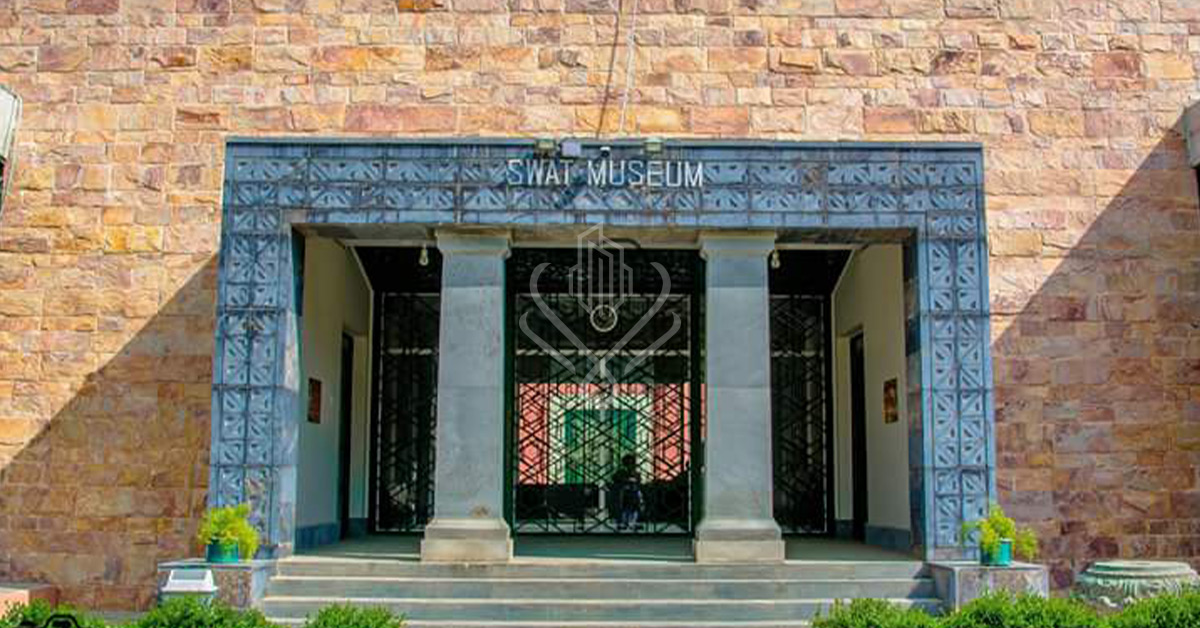
Located on the main Mingora-Saidu Sharif road is the Swat Museum. The vast collection of Gandhara sculptures from the Buddhist sites in Swat is housed in this museum. When a twin museum, the Museo Nazionale d’Arte Orientale, was inaugurated in Rome in 1958, DOAM built the original museum with assistance from the Italian Mission and Wali Swat. The current museum building was created by Italian architects Ivano Marati and Candida Vassallo, working together with engineers from the University of Engineering and Technology, Peshawar, and Federico II of Naples University.
Jehanabad Buddha
The enormous sculpture of a sitting Buddha carved into a reddish-colored rock face rises on a hillside southwest of the village of Jenanabad (Shakhorai). It is located five kilometers northeast of Manglawar. From the road, you can also see this enormous Buddha image on the right side leading to Malamja Ba. It is well preserved because of its elevated location above the small terrace, though the nose appears to have sustained damage. With a height of approximately 7 meters, the Buddha figure is unquestionably the most remarkable sculpture to be found in the Gandhara region dating back to the 7th or 8th century A.D.
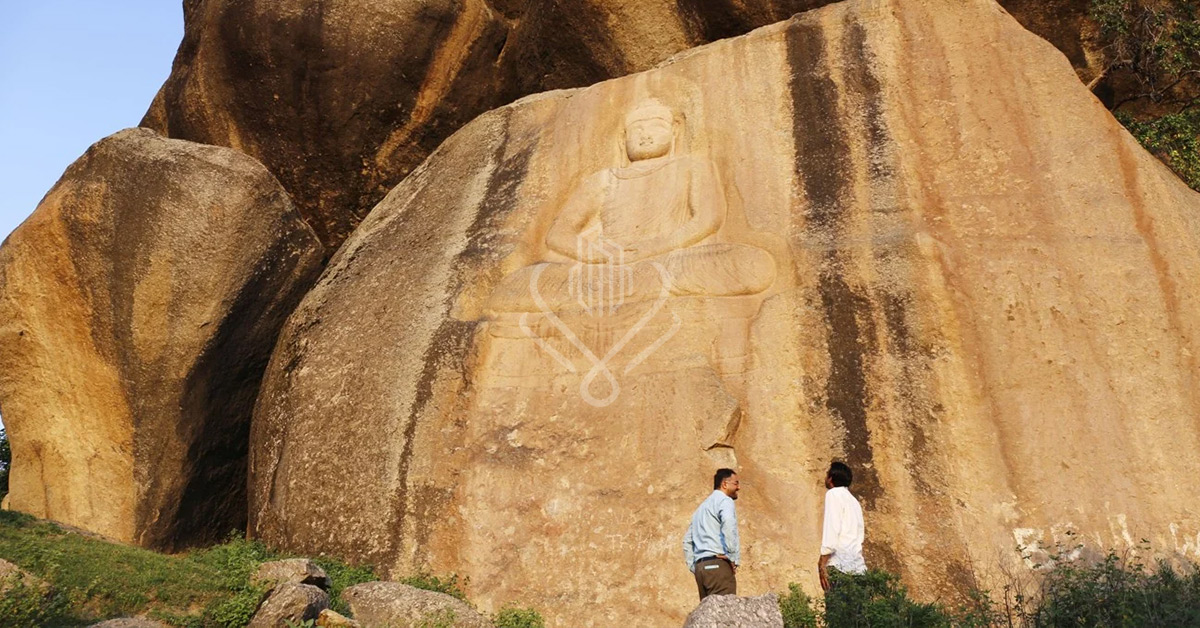
In addition to these Gandharan Sites, the Karakoram Highway (Old Silk Route) has a number of other ruins. The most notable and noteworthy Buddhist imprints in this region are the rock carvings of Shatial and Chillas, Kargah Buddha in Gilgit, Sadpara Buddha in Skardu, and Garnish.
Conclusion
In conclusion, Pakistan’s rich and diverse heritage of Buddhist sites and artifacts offers a captivating journey through the history and culture of the Gandhara Civilization. The Buddhist Heritage Trail in Pakistan presents a unique opportunity for enthusiasts, historians, and travelers to explore the remnants of this ancient civilization, which has left an indelible mark on the region’s cultural tapestry.
From the Sphola Stupa, which bears witness to the profound connection between Buddhism and the Kushan Empire, to the Peshawar Museum’s impressive collection of Gandhara art, these sites provide a glimpse into the art, architecture, and history of this era. The rock inscriptions at Shahbaz Garhi, potentially the earliest written records in South Asia, and the well-preserved Takht-i-Bahi Buddhist Monastery, offer valuable insights into the religious and architectural aspects of Gandhara.
Further along the trail, Jamal Garhi showcases the remarkable Buddhist monastery, with Lieutenant Cromten’s discoveries now displayed in museums worldwide. The Ghalegay Rock Carvings, the Swat Museum’s vast collection of Gandhara sculptures, and the awe-inspiring Jehanabad Buddha sculpture are all testament to the enduring legacy of this ancient civilization.
FAQs
Q1: What are the four main trails included in the Buddhist Heritage Trail in Pakistan?
Ans: The four main trails on the Buddhist Heritage Trail in Pakistan are Taxila and surroundings (Punjab), Peshawar and surrounding (Khyber Pakhtunkhwa), Swat and surroundings (Khyber Pakhtunkhwa), and Karakoram Highway & Gilgit Baltistan.
Q2: What is the historical significance of the Sphola Stupa located in Zarai village?
Ans: The Sphola Stupa holds historical significance as it reflects the close relationship between Buddhism and the Kushan Empire, with artifacts from the Gandhara region. It also housed Gandhara sculptures that are now displayed in the Peshawar Museum.
Q3: Which museum in Peshawar is renowned for its extensive collection of ancient Gandhara Empire Buddhist artwork?
Ans: The Peshawar Museum is well-known for its extensive collection of ancient Gandhara Empire Buddhist artwork, including sculptures, architectural details, stucco, terracotta figurines, relic caskets, and more.
Q4: When was the Peshawar Museum established, and what is its primary focus?
Ans: The Peshawar Museum was established in November 1907. Its primary focus is to house and display the Gandharan sculptures unearthed by British scholars from prominent Gandharan locations, showcasing one of the largest collections of Buddhist artwork from Gandhara.
Q5: What are the museum timings for the Peshawar Museum, and what are the entry fees for visitors?
Ans: The Peshawar Museum is open from Saturday to Thursday, from 9:00 AM to 5:00 PM, and is closed on Fridays. Entry fees are Rs. 10 for Pakistani Nationals and Rs. 300 for Foreigners.
Q6: Where is the archaeological site of Gor Khatri located, and what historical structures can be found there?
Ans: Gor Khatri is situated in Peshawar and is housed within a Mughal-era caravanserai. It includes a fire brigade building, cells, and the Gorakhnath Temple. The archaeological site was constructed in 1640 A.D. by Begum Jahanara, the daughter of Mughal Emperor Shahjahan, and was initially intended as a caravanserai.
Q7: What makes Shahbaz Garhi significant in the context of Gandhara history?
Ans: Shahbaz Garhi, located in Khyber-Pakhtunkhwa’s Mardan District, was once a thriving Buddhist metropolis with stupas and monasteries. It is known for its rock inscriptions inscribed in the Kharosthi script, potentially the earliest written records in South Asia.
Q8: Where is the Takhti-Bahi Buddhist Monastery located, and why is it considered exceptionally well-preserved?
Ans: The Takht-i-Bahi Buddhist Monastery is situated in District Mardan, Khyber-Pakhtunkhwa. It is regarded as one of Gandhara’s most impressive examples of Buddhist ruins and is exceptionally well-preserved. This first-century AD monastery continued to operate into the seventh century.
Q9: What remarkable discovery was made in Jamal Garhi, and where are the artifacts currently housed?
Ans: Jamal Garhi, a small town in Khyber Pa
khtunkhwa, was home to a Buddhist monastery from the first to the fifth century. British explorer Sir Alexander Cunningham made the initial discovery, and Lieutenant Cromten excavated the site in 1871, finding numerous Buddhist sculptures, which are now housed in the Indian Museum in Calcutta and the British Museum.
Q10: What are some of the notable Buddhist imprints along the Karakoram Highway, and what do they add to the Buddhist Heritage Trail?
Ans: Along the Karakoram Highway, there are several significant Buddhist imprints, including the rock carvings of Shatial and Chillas, Kargah Buddha in Gilgit, Sadpara Buddha in Skardu, and Garnish. These imprints contribute to the richness and diversity of the Buddhist Heritage Trail, highlighting the cultural and historical significance of the region.
Our Featured Article:
Read More: Gandhara Tourism to Help Boost Country’s Soft Image: Minister
Don’t miss the chance to invest with Lakeshore! Secure your investment today by investing your financial investment with Lakeshore in the following available options like Lakeshore City, Lakeshore Club, and Lakeshore Farms.
For More updates, please Contact +92 335 7775253 or visit our website https://lakeshorecity.com/
Lakeshore City is the upcoming elite lifestyle at Khanpur Dam. Offering no parallel amenities for the members and owners of distinguished farmhouses.
Become Part of Luxurious Lifestyle


